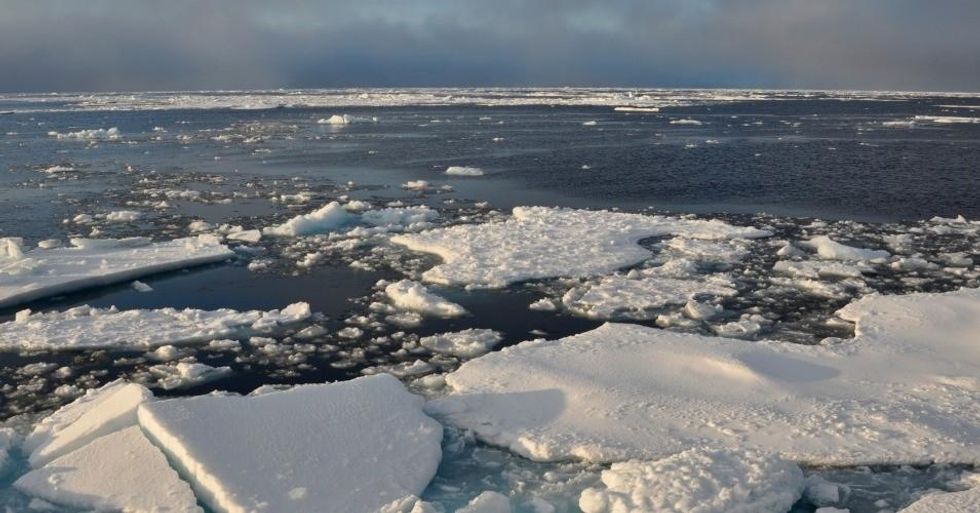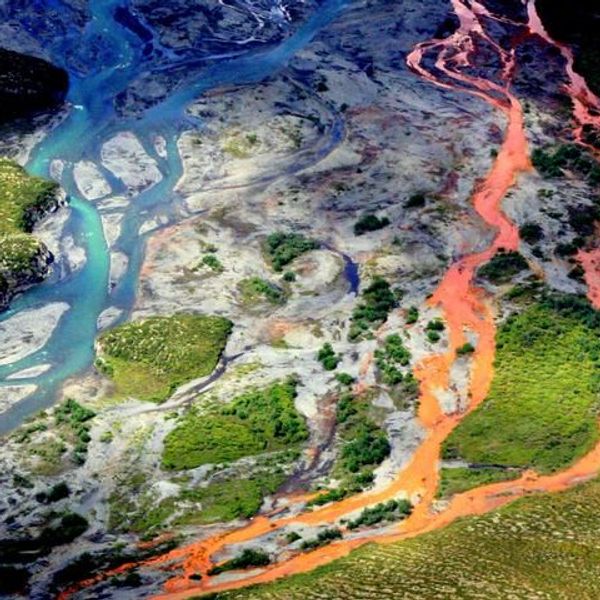Thanks to Climate Change, Arctic Sea Ice at Lowest Levels Ever Recorded
National Snow and Ice Data Center researchers find 'Arctic is being seriously impacted by our warming climate'

At the height of the most recent winter season, Arctic sea ice was at its lowest level ever recorded, with climate change playing a key role in this historic decline, the National Snow and Ice Data Center revealed Thursday.
Arctic sea ice reached its maximum levels on February 25th at 5.61 million square miles. This "was the lowest in the satellite record, with below-average ice conditions everywhere except in the Labrador Sea and Davis Strait," the scientists note.
While there is still a chance that ice levels could bounce back late in the season, the researchers say that outcome is unlikely.
Scientists, United Nations experts, and federal authorities overwhelmingly link the dramatic thinning and disappearance of Arctic ice to climate change, and numerous studies confirm that 2014 was the warmest year ever recorded.
The NSIDC's findings, furthermore, come on the heels of a study published earlier this month in the journal Cryosphere, which concluded that Arctic sea ice is vanishing far more rapidly than was previously thought.
The decline of Arctic ice is already having a dramatic impact on the ecosystem and wildlife, from walruses to polar bears, and has forced Indigenous peoples to alter their hunting strategies, leading to more dangerous conditions.
Ted Scambos, senior research scientist for the NSIDC, told the Guardian that "[The record low extent] is significant, in that it shows that the Arctic is being seriously impacted by our warming climate."
An Urgent Message From Our Co-Founder
Dear Common Dreams reader, The U.S. is on a fast track to authoritarianism like nothing I've ever seen. Meanwhile, corporate news outlets are utterly capitulating to Trump, twisting their coverage to avoid drawing his ire while lining up to stuff cash in his pockets. That's why I believe that Common Dreams is doing the best and most consequential reporting that we've ever done. Our small but mighty team is a progressive reporting powerhouse, covering the news every day that the corporate media never will. Our mission has always been simple: To inform. To inspire. And to ignite change for the common good. Now here's the key piece that I want all our readers to understand: None of this would be possible without your financial support. That's not just some fundraising cliche. It's the absolute and literal truth. We don't accept corporate advertising and never will. We don't have a paywall because we don't think people should be blocked from critical news based on their ability to pay. Everything we do is funded by the donations of readers like you. Will you donate now to help power the nonprofit, independent reporting of Common Dreams? Thank you for being a vital member of our community. Together, we can keep independent journalism alive when it’s needed most. - Craig Brown, Co-founder |

At the height of the most recent winter season, Arctic sea ice was at its lowest level ever recorded, with climate change playing a key role in this historic decline, the National Snow and Ice Data Center revealed Thursday.
Arctic sea ice reached its maximum levels on February 25th at 5.61 million square miles. This "was the lowest in the satellite record, with below-average ice conditions everywhere except in the Labrador Sea and Davis Strait," the scientists note.
While there is still a chance that ice levels could bounce back late in the season, the researchers say that outcome is unlikely.
Scientists, United Nations experts, and federal authorities overwhelmingly link the dramatic thinning and disappearance of Arctic ice to climate change, and numerous studies confirm that 2014 was the warmest year ever recorded.
The NSIDC's findings, furthermore, come on the heels of a study published earlier this month in the journal Cryosphere, which concluded that Arctic sea ice is vanishing far more rapidly than was previously thought.
The decline of Arctic ice is already having a dramatic impact on the ecosystem and wildlife, from walruses to polar bears, and has forced Indigenous peoples to alter their hunting strategies, leading to more dangerous conditions.
Ted Scambos, senior research scientist for the NSIDC, told the Guardian that "[The record low extent] is significant, in that it shows that the Arctic is being seriously impacted by our warming climate."

At the height of the most recent winter season, Arctic sea ice was at its lowest level ever recorded, with climate change playing a key role in this historic decline, the National Snow and Ice Data Center revealed Thursday.
Arctic sea ice reached its maximum levels on February 25th at 5.61 million square miles. This "was the lowest in the satellite record, with below-average ice conditions everywhere except in the Labrador Sea and Davis Strait," the scientists note.
While there is still a chance that ice levels could bounce back late in the season, the researchers say that outcome is unlikely.
Scientists, United Nations experts, and federal authorities overwhelmingly link the dramatic thinning and disappearance of Arctic ice to climate change, and numerous studies confirm that 2014 was the warmest year ever recorded.
The NSIDC's findings, furthermore, come on the heels of a study published earlier this month in the journal Cryosphere, which concluded that Arctic sea ice is vanishing far more rapidly than was previously thought.
The decline of Arctic ice is already having a dramatic impact on the ecosystem and wildlife, from walruses to polar bears, and has forced Indigenous peoples to alter their hunting strategies, leading to more dangerous conditions.
Ted Scambos, senior research scientist for the NSIDC, told the Guardian that "[The record low extent] is significant, in that it shows that the Arctic is being seriously impacted by our warming climate."

